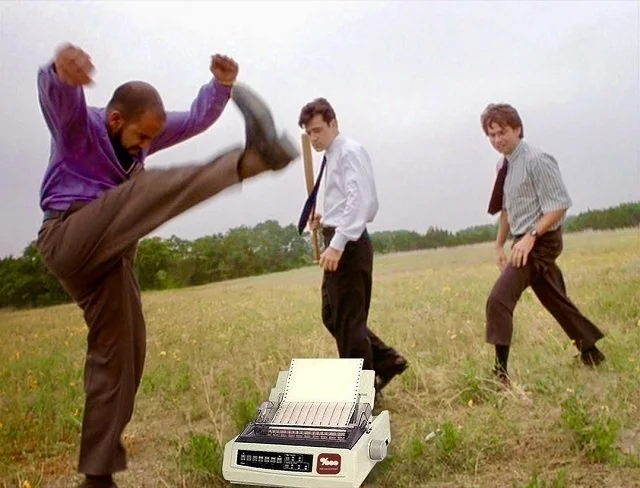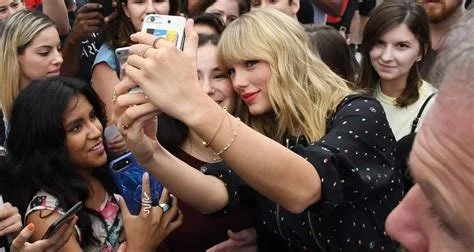Why Parasocial Bonds Prove Authors Can’t Be Replaced by A.I.
Parasocial relationships get a bad rap.
The term itself was coined by mid-century sociologists who noticed fans treating television hosts as personal friends. The experts wrung their hands over this “illusion of intimacy.” In their minds, such bonds were inherently pathological—a symptom of a populace too naïve to understand that Johnny Carson couldn’t hear them laugh.
But here’s what the sociologists missed: Those illusions fill a real human need.
It’s oversimplifying to call parasocial bonds fake relationships. They’re one-way extensions of the same faculty that lets us sympathize with characters in a novel or mourn a celebrity’s death. It’s the human mind reaching for communion across time and distance; a behavior technology amplifies but didn’t create.
The internet didn’t invent parasociality. What it did was make it obvious.
You see it when streamers address “chat” like a single person, or when YouTube commenters refer to creators by their Christian names like old friends.
Man is a social creature who naturally seeks to know and be known, and the digital era lets us scale up that dynamic. The resulting bonds can be shallow or deep, depending on the sincerity of the person on the other end.
Nowhere is this effect more profound than in literature. A musician shares an emotional state for three minutes. A streamer offers an exaggerated personality through a screen. But an author opens a door into the mind itself.
Writing is the closest humanity has ever come to telepathy. When readers pick up your book, they are hearing your thoughts; shaped, translated, and preserved through language. They experience your ideas, your humor, your fears; even your sense of rhythm.
Centuries can pass between sending and receiving, and yet the transmission remains. Augustine, Austen, and Lovecraft are still talking to us.
That is why A.I. can mimic surface patterns but not replace authors. Language models don’t think. They simulate patterns of thought. Sure, they can generate prose that looks intelligent. But the telepathic link is broken, because there’s no person on the other side.
A story written by a mindless engine can’t produce genuine connection; it only tricks readers with the false promise of interpersonal relationship.
Readers form parasocial bonds with authors, even those long dead, because they recognize a human spirit in the text. They respond to the psychic fingerprints that no algorithm can counterfeit. The reader doesn’t need to meet the author to know him. Because the connection happens invisibly, mind to mind.
Screen cap: Paramount
That’s why great writers endure while marketing trends and entertainment cycles burn out. A parasocial bond built through writing isn’t a mere bug of the medium. Indeed, it’s the whole point.
That means if you write honestly; if your words reveal a part of yourself that only you could express, then every reader who truly connects with your work is, in some small but real sense, your friend.
And no machine will ever have friends.
Let’s look closer at what’s going on here.
People like to say parasocial relationships are one-sided, that you just feel connected to a public figure who doesn’t know you exist.
But that’s not quite true. These figures do know you exist, just not personally. For professional artists who make a living by their craft, knowing the kind of person drawn to their work is part of the job. The sharper among them consciously court this bond.
Take the reigning champion, Donald Trump.
Years before his political rise, Trump had already mastered shaping his public persona through media. By the time he entered politics, he’d built his personal brand to a level resembling a monarch or cult leader more than a mere celebrity.
Remember Trump’s 2016 remark about being able to “shoot someone on Fifth Avenue” without losing voters? That wasn’t arrogance. It simply acknowledged the kind of connection he’d built. His followers didn’t just like him; they identified with him. His success was their success. His fights were their fights.
Politicians and influencers all use this same mechanism. But so do artists.
Taylor Swift, for instance, has turned the cultivation of emotional intimacy into an empire. When she releases a new track, her fans respond on a personal level. Each one believes that she wrote it just for her.
And a sense, she did.
Now, I’ve argued before that acts like Taylor Swift would be considered niche compared with megastars of the 1980s. Others have pointed out that your grandma knew the lyrics to “Beat It,” but nobody over 30 can even hum a Taylor Swift song.
That fragmentation has more to do with the shattering of pre-Ground Zero monoculture than a faliure of parasocial connection. It’s a testament to her skill that even in this atomized environment, Swift delivers emotional experiences in a way that makes millions feel like she’s singing just to them.
That shows you the essence of parasocial connection. An artist creates the illusion of direct emotional correspondence with each individual in a massive audience. It’s not an illusion in the sense of fakery, but a psychological bridge. And nowhere does that bridge extend farther or more intimately than in written fiction.
That brings us to the art you probably came here for and may even practice yourself: writing.
Authors, especially those in Newpub, have grown increasingly nervous about the ability of large language models to produce written content. But while A.I. has begun to mimic surface-level style and even create readable prose, it cannot replicate the kind of communication authors tap into when they write.
Because writing fiction isn’t just about hammering out words. At heart, it’s about transmitting consciousness.
That may sound New-Agey. But when you open a novel, you’re letting another person’s thoughts invade your own. You see what he saw, feel what he felt, and in a sense, dream his dreams.
A story well told forms a telepathic link across time and space. You might be sitting in your apartment in 2025, but for a few hours, you’re living inside the mind of a man who died two hundred years ago—or even stranger and more wondrous, one who doesn’t exist at all.
Brandon Sanderson’s success is the purest modern proof of this phenomenon. His fans aren’t mere consumers; they’re believers. Sanderson’s Kickstarter for his surprise novels in 2022 raised over $40 million, a feat unmatched in publishing history.
People pledged eight figures for four books they hadn’t even seen. And they pledged it because they trusted Sanderson. They felt they knew him. They had faith in his creativity approaching that of Medieval pilgrims’ devotion to saints’ relics.
The Holy Pokémon of San Carlo (replica)
That remote yet personal relationship is one A.I. can’t imitate. You can train a model to emulate Sanderson’s syntax, his sentence rhythm; even his magic systems. But you can’t fake the bond that forms between an author and a reader who has traveled with that author’s characters through thick and thin.
Parasocial relationships often get written off as modern oddities of digital culture. But they’re ancient. The first storytellers inspired the same sort of connection. Their listeners trusted the shamans and poets to lead them into the unknown and back again.
The only difference now is scale. A bard once reached fifty listeners. A contemporary author can reach fifty thousand—or fifty million.
And even at that scale, the truth remains inescapable: The connection is still human.
Readers have never sought out flawless prose. They can’t all be lured in by trope checklists. What they’re looking for is authenticity. They want to feel that another mind is communicating genuine, hard-won truth.
We’ll save a full answer to the objection “But isn’t fiction lying?” another time. Suffice it to say that the best fiction, enduring fiction, lies in service of the Truth.
That’s why newpub thrives. And it’s why fiction written by an algorithm, no matter how grammatically precise, cannot build that telepathic bridge to the reader.
Because artificial intelligence is just that. It doesn’t live. That means it doesn’t doubt, hope, fall, or rise again. It has no interior life to share. All it can do, to paraphrase a particular dear reader, is play dice with what living authors already wrote.
In contrast, an author’s voice carries the weight of his experience. Even when he writes about dragons, starships, or angels, his characters reflect truths drawn from reality.
When readers say, “This author gets me,” what they’re really saying is, “This author has been where I’ve been and feels what I feel.”
Books are cooler media than movies or music. That’s why novels, more than films or songs, forge the strongest parasocial bonds. The act of reading demands collaboration between two minds: the writer’s and the reader’s. And the reader must envision every scene in the light cast by the author’s words. Reading a book is like playing a duet across time in silence.
So, don’t lose sleep over the headlines about A.I. taking over creative industries. Even tech bros who’ve been assured they’ll lose their jobs next year for the past five years are still drawing paychecks.
Machines are tools. They can assist. They can imitate. But they cannot win the reader’s heart and mind. Only a person can do that, because only a person has them.
The age of mass-produced, industrial storytelling is dead. Long live the era of personal storytelling!
It’s a cosmic irony that the parasocial bond once dismissed as unhealthy is the vital link that will keep artists connected with their audiences. If you’re an author, that fact should be liberating. You don’t need to compete with A.I. All you need to do is reach your ideal audience. And that’s not reach as in “exposure”. It’s speaking to readers so as to form the bond that no algorithm can replace.
In the end, writing is more than a process. It’sa form of communion. And communion is always, irreducibly, personal.
The deep lore of Tolkien and the gritty action of Berserk!
Brian Niemeier is a best-selling novelist, editor, and Dragon Award winner with over a decade in newpub. For direct, in-person writing and editing insights, join his Patreon.











